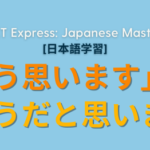Ready for a Challenge? Join the “2-Week Hiragana and Katakana Challenge”!
We know learning Hiragana and Katakana can feel like a big hurdle, but guess what? You’re not alone! Whether you’re a current student looking to level up or someone just starting your Japanese journey. Staying motivated is key, and that’s exactly why we’re inviting you to take part in the “2-Week Hiragana and Katakana Challenge”! This is your chance to master those tricky characters while having fun. Before you dive in, here are some helpful tips to make your learning process smoother and faster.Tip 1: Divide the Characters into Sub-Groups
Don’t overwhelm yourself—divide the characters into smaller groups. Spend about an hour each day focusing on 15 characters. You’ll fly through Hiragana in Week 1 and Katakana in Week 2! Here’s a breakdown to help:- Day 1: Study [a, ka, sa]
- Day 2: Study [ta, na, ha]
- Day 3: Study [ha, ma, ya]
- Day 4: Study [ra, wa, and modified syllables like “kya,” “kyu,” or “kyo”]
- Day 5: Practice writing words using these characters
- Day 6: Focus on reading exercises
- Day 7: Take a break—you’ve earned it!
Tip 2: Practice Writing with a Copy
Copying the characters is a great way to get familiar with each stroke. For instance, can you spot the difference between Hiragana め (me) and ぬ (nu)? Or Katakana シ (shi) and ツ (tsu)? These small distinctions become easier to remember when you practice them on paper. Before you know it, they’ll start making perfect sense!Tip 3: Write from Memory
Once you’re comfortable copying, challenge yourself by writing from memory. It’s okay if you forget some—mistakes are part of the learning process, and each one brings you closer to success!Tip 4: Use the Characters in Words
Apply the characters in simple words to lock them into your memory. For example, after learning [あ (a), か (ka), さ (sa)], practice writing words like:- あさ (asa) – morning
- かく (kaku) – write
- さけ (sake) – salmon
Tip 5: Practice Reading
After completing the writing steps, test your reading skills. It’s all about putting your new knowledge into action! For example, when you’ve learned [た (ta), な (na), は (ha)], practice reading words with:- はな (hana) – flower
- なつ (natsu) – summer
- はし (hashi) – chopsticks
Bonus Tip: Memorize Model Words!
Try memorizing model words! For example, break down a word you already know, like ホテル (hoteru) = hotel, and focus on recognizing each character in new words.- ホ (ho)
- テ (te)
- ル (ru)
Are You Ready for the Challenge?
This challenge is perfect for both current students and those thinking of joining our classes! If you’re up for the challenge, stay motivated and see how much you can accomplish in just 2 weeks. Don’t worry if you’re starting from zero—we’re here to guide you every step of the way!Enrolling in JPLT gives you access to this following materials via Email:
Day 1 of the 2-Week Challenge
JPLT – Writing Systems of Japan Hiragana and Katakana PDF (practice sheets: hiragana-rensyu.pdf and katakana-rensyu.pdf).- 3 YouTube videos for getting familiar with character sounds
- Practice writing strokes: Hiragana-rensyu-2 PDF Katakana-rensyu-2 PDF
- Perfect your strokes by writing words. Let’s Learn Hiragana (Page 14)
Kick off Day 1 of the 2-Week Challenge with us today! We’ve even included mnemonics and study tips to make the process smoother. Don’t miss out on this exciting opportunity to boost your Japanese skills!
Join now, and let’s make learning Hiragana and Katakana fun and easy together! 🎉
—JPLT: Japanese Language Training Online School
Produced by Dialog Plus Website | Facebook | Community | Lesson Platform: JPLT Metaverse CampusInquire Now!
Send us your email to know our offers, promos, and all the latest updates on our courses!





